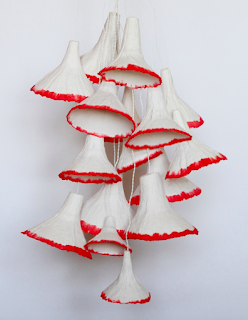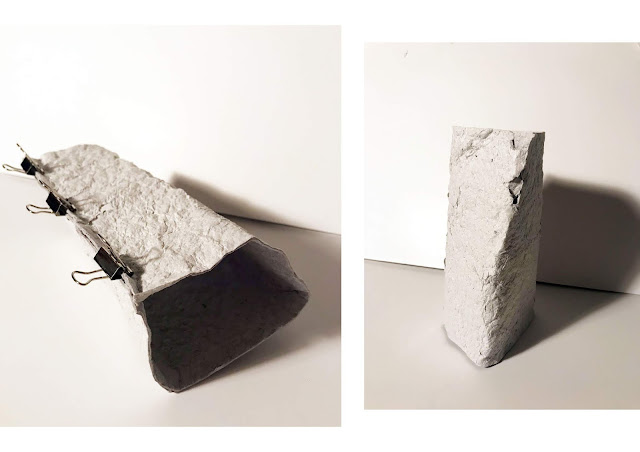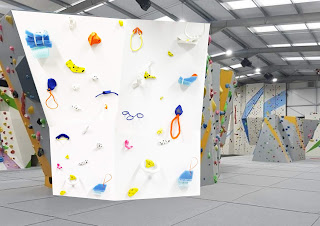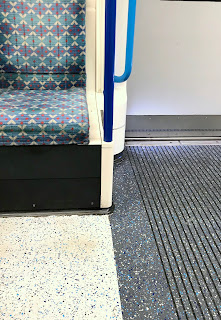In my self-initiated project, I aimed to push myself to work with materials I don’t regularly work with as I have found in previous projects it is easy to allow yourself to become comfortable with materials. So, after deciding in wanted to focus on rock climbing walls, and the feeling of climbing as my theme I began making 3D samples, using different materials with 3D capabilities such as clay, sponge and fabrics filled with rice/wadding. Visually, I found my samples really interesting but felt the initial ideas I wanted to portray had been lost through my making process. This is when I started adding more interactive components into my samples. This is also when the idea came to build a non-functioning climbing wall. Something that would appear to support you but in actual fact would cause you to fall, emulating the feeling I have when rock climbing. For example, below is a sample made from Baked clay and para cord, seemingly strong but when weight was ap







